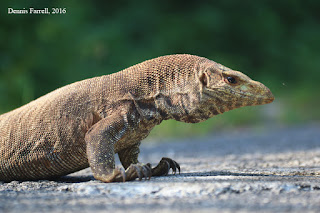Location: Phu Khieo Wildlife Sanctuary, Chaiyaphum
Date: Thursday, 13th October, 2016
Habitat: Mid- to upland forested ponds
My best photos of the day:
The conundrum of the day: Aciagrion.... what?
Aciagrion borneense, copula (at slightly lower altitude). Here you can just make out the wide black markings on the abdomen - which makes it easier to separate, whereas the specimen above is almost solid blue.
Welcome to Phu Khieo... my first sighting of the tiny, but stunning Amphiallagma parvum, male...... and the female
The usual equally beautiful Ceriagrion azureum (though in much smaller numbers now)
Aciagrion pallidum, male - with white appendages (some have an orangy colour).
Orthetrum pruinosum neglectum, male. Very common right now.
Diplacodes nebulosa, copula. These were everywhere - but my first decent shot of a copula.
The super-common Ischnura senegalensis, copula. Still nice, though
Lestes concinnus, replaced most of the other Lestes species now and was incredibly abundant.
Gynacantha subinterrupta, teneral male - usually abundant everywhere, but rather scarce here.
Ischnura aurora aurora, male - a few made an appearance
Lestes elatus, female. Seemingly more abundant later in the year.Very scarce here, for some reason... Orthetrum luzonicum, teneral female
Ooops ... poor damsels.
Can you guess the species?
Orolestes octomaculata, teneral female
... and this one?
Cratilla lineata calverti, teneral male
What, no frog?!?
Not all dragons fly. This stunning, but lazy Monitor Lizard was plonked right in the middle of the road.
No idea what species, but there were several along the road early in the morning. This one was a decent size.






















Hello Dennis, fantastic photos, keep up the good work! Regards, Alan (was in Thailand last time I contacted you in August).
ReplyDeleteThank you for your kind words, Alan! I hope to take many more, though the main dragonfly season is almost over.
ReplyDelete